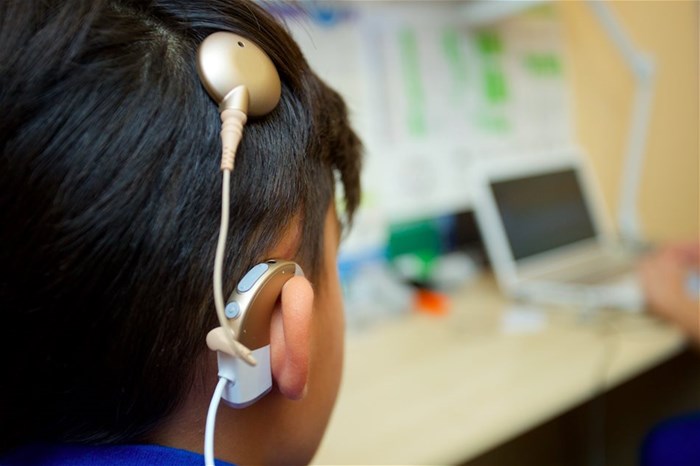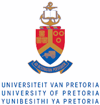
Subscribe & Follow
Customised cochlear model pursues hi-fi hearing

The World Health Organisation estimates that in 2020, more than 5% of people, or about 466 million, suffered from disabling hearing loss. Most live in low- and middle-income countries such as South Africa.
The detrimental effect of untreated hearing loss crosses generations. Elderly people may experience social isolation, depression, reduced quality of life, and loss of independence and mobility; while a young adult may have lower income-earning potential, or even be excluded from employment, compared to individuals with normal hearing; and a child who has difficulty hearing will have impaired speech and language skills, which will affect their development and social integration. Cochlear implantation (CI) is a well-established treatment option for individuals who receive insufficient benefit from hearing aids. CI bypass damaged hair cells in the cochlea and stimulate the auditory nerve fibres electrically. But before this invasive step is taken, it is worth assessing whether there will be a significant improvement in hearing.
Cochlear implantation is a well-established treatment option for individuals
who receive insufficient benefit from hearing aids.
The University of Pretoria (UP) team’s research tries to understand how CIs should be designed and customised to provide functional hearing to a CI user. They do this through computational modelling, a noninvasive method to observe and investigate the auditory system when subjected to electrical stimulation to a level of detail that is impossible via experimental procedures in live CI users. This unique, virtually invasive window into the auditory system may help customise the CI for a specific user and unravel the underlying mechanisms that complicate some cases.
Transdisciplinary solution for improved hearing
The team’s transdisciplinary approach investigates the unique relationship between electric stimulus and auditory perception on a case-by-case basis. There is an interplay among highly sophisticated CI technology, delicate CI surgery to integrate the technology with the sensorineural system inside the cochlea, the response of the sensorineural system to the electric stimuli and therapy to facilitate hearing rehabilitation. Each of these aspects requires discipline-specific skills to be applied to achieve the most satisfactory outcome.
Professors Johan Hanekom and Tania Hanekom, along with Dr Werner Badenhorst of the Bioengineering Research Group in UP’s Faculty of Engineering, Built Environment and Information Technology work in the niche field of three-dimensional (3D), person specific computational modelling of CIs to understand and predict how individuals have different hearing outcomes. At the root of these models lies an accurate geometric description of the cochlea and its surrounding structures that, for live CI users, needs to be derived from low-resolution clinical images.
The research of Dr René Baron of the Department of Anatomy in the Faculty of Health Sciences aims to develop techniques to quantify the cochlear geometry, thereby providing parameters for the construction of the 3D models being developed by the Bioengineering Research Group. The models can be used at a basic scientific level, which involves probing the underlying mechanisms of electrically stimulated hearing, or at a translational level, where researchers and clinicians can join forces to manage complications associated with cochlear implantation.
Dr Talita le Roux of the Department of Speech-Language Pathology and Audiology provides the clinical research interface with CI users who participate in validation studies or are referred to the research team when complications with their CIs cannot be resolved. As a natural extension of the UP-based transdisciplinary team, a CI recipient’s managing audiologist and ear, nose and throat surgeon provide clinical data and support the investigations. A number of connections with CI programmes across South Africa have been established on this basis. This collaboration led to the formation of the cross faculty Cochlear Implant Research Interest Group, an informally organised group of academics and researchers at UP with a common interest in the dynamic and transdisciplinary field of CIs.
Unique view of cochlear anatomy
The scientific foundation underlying individual CI performance is also being translated into clinical tools for the post-operative management of CI users. Specifically, the team’s person-specific computational cochlear models are evolving to:
- offer high-resolution visual rendering of the CI electrodes inside the cochlea;
- allow model-predicted customisation of the CI device for specific CI users; and
- provide model-based diagnostics to help diagnose and treat problems that may arise post operatively in CI users, such as inadvertent facial nerve stimulation.
The focus on person-specific, high-fidelity representation of the detailed cochlear anatomy in these models is unique in the world, thus contributing significantly to understanding how CIs function on a person specific level. The team is one of only a handful of international research teams contributing to this field.
- ‘Endgame’ youth cigarette sale ban could prevent 10,000 lung cancer deaths in SA over 70 years – UP researcher24 Oct 15:39
- Tuks Camerata nominated for 2024 South African Music Award22 Oct 11:50
- New VC gives a vision for the future of UP16 Oct 15:56
- ‘UP Beetle’: The heritage behind the car that’s generating renewed nostalgia – and online buzz19 Sep 12:51
- #UPGivingMatters: Stand a chance to win an iconic ‘one-of-a-kind’ 1967 VW Beetle with a proud UP history20 Aug 13:35











